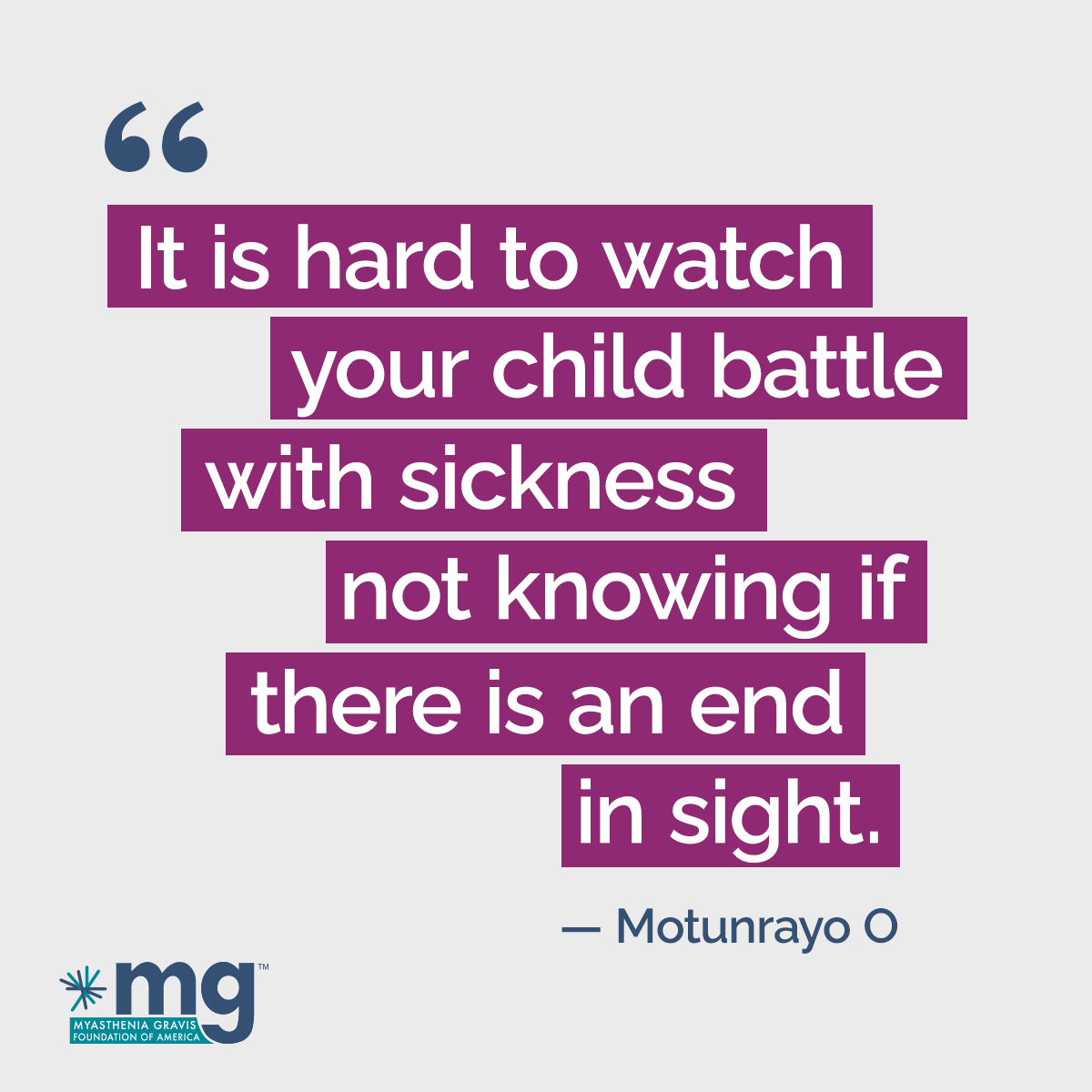 My daughter Teniola was diagnosed with ocular myasthenia gravis in 2013. She was just about to turn three years old at the time.
My daughter Teniola was diagnosed with ocular myasthenia gravis in 2013. She was just about to turn three years old at the time.
A little back story.
She had what I would call a common cold. It was RSV season in the United States. We live in Nigeria now, but we were in the U.S. at the time. She was running a temperature, coughing, and was severely congested. We visited the emergency room several times because she wasn’t getting better, and her temperature was on the high side.
As parents, we asked the doctors multiple times to treat this infection as a matter of urgency, but we were told firmly that her body would fight it since it was just a virus.
Some weeks down the line, she got better, but we noticed that her eyelids started to droop and before long, she had ophthalmoplegia.
How We Were Diagnosed
We visited the ophthalmologist, who ran tests and declared that her droopy eyelids had nothing to do with her eyes. He referred us back to the pediatrician, who referred us to the neurologist.
The neurologists conducted a nerve test, ran some blood tests, and declared she had MG.
The Journey Begins
She was placed on pyridostigmine straight away, which had to be compounded to liquid state for her to take and, at that time, was not easy to get at just any pharmacy, even in the U.S. As parents, we were already worried about what would happen when we got back to our home country.
Leaving the U.S. for Nigeria
Upon getting back to our home country, the first thing we did was go to our government hospital to see a doctor and get referral for a neurologist.
Not surprisingly, many of the doctors had not even heard of the condition. Those who had heard of the disease, had never come across anyone suffering with MG before . Luckily, upon referral to a neurologist, we got one who was familiar with the disease.
The doctor continued to increase the dose of pyridostigmine until my daughter was at the maximum for her weight, yet the drooping persisted, and she wasn’t better. The neurologist then started her on steroids (Prednisolone). At first, we started to see better results – but we stopped getting good results after some time and she was experiencing all sorts of steroid side effects.
Challenges
We have been told that early intervention made a whole lot of difference in our journey. Consultants are usually surprised that she doesn’t have generalized MG, with symptoms in her whole body. But we have faced many different challenges managing Teniola’s MG.
Availability of medication. The only medicine that’s easy to find here in Nigeria is Prednisolone. MG is a rare disease, and the medications used to treat the disease are not common. I think only three major pharmacies in our country (who specialize in rare medicines) sell them. We have had situations when we couldn’t get pyridostigmine from any source for over a month. There are other medications that I have read about that are totally unavailable in the country, so we cannot even try them.
Cost of care. You can only imagine the astronomical cost we have to pay for medicine. After all, they are rare and imported. Plus, we must pay out of pocket for our medicine and doctors’ visits, medical tests, and surgery. Yes, we paid outright for her thymectomy. Most insurance companies in our country don’t cover autoimmune diseases.
Lack of resources. As we all know, MG is not common. There is barely any information on this side of the world. Most of what we know, we found online. Our neurologist often must ask a friend or two outside of the country for current practices. He treats our daughter with a lot of caution, as well, because we have no research handy about side effects she may experience if we up her doses over a certain level. I really wish we had more information out there about MG, with less medical jargon and more brain friendly, relatable terms.
Lack of community. Although our doctor assures us that there are other people with MG being treated in Nigeria’s government hospitals, my daughter is his only patient with MG. She is the only person I know with MG. We have no one to share experiences with, no one who understands what we are going through.
Access to more treatment options. We know there are other treatment options, drugs with names I have only read over the internet that we don’t have in our country. So we cannot try them to know if our daughter will fare better on any other.
Age. Certain medications that are used to treat MG have severe side effects, including some which are potentially damaging to the reproductive system. Since our daughter is still so young, we cannot add to her problems by trying treatments that could impact her long-term health.
Teniola’s Experience
Teniola hates having MG. She hates that she has to pop so many pills without an end in sight, she doesn't have a lot of friends, and she gets teased a lot in school because of the ptosis in her eyes. She is really big for her age because she's been on steroids long term and now has to take more pills to counter some side effects of the steroids. In short, she isn't a happy camper.
Caregiving Responsibilities
As caregivers, most of our concern is for my child’s physical, emotional, and psychological wellbeing. Other concerns are financial – we do spend a lot on treatment. There’s the lack of community, access to drugs, the emotional stressors.
As parents, we have this psychological blame going on. We feel responsible for what happened to her. We wonder if we could have done something differently, if it could have been avoided. If we had insisted upon more intensive treatment for her illness when she was three, would that have made a difference?
Of course, life would have been easier for our family if we didn’t have to spend most of our earnings on treatment and consultations with one doctor or another. It is hard to watch your child battle with sickness not knowing if there is an end in sight, especially when she gets frustrated with all the treatments and no improvement. Popping pills is clearly not fun for anyone. The side effects of the drugs are even worse than the problem. That’s hard to watch as well.
Finding Community
Community is important. We only started feeling like we weren’t alone after I joined the Myasthenia Gravis Foundation of America Instagram page. Reading about other people’s journeys gave us better perspective, and we felt less alone.
You cannot do it alone. I’ve tried to explain the condition to people, but they just don’t get it. Having an MG community is everything. The people you’re talking to already get it. They will understand the frustration in your tone, they will freely share their journey. They will encourage.
Reading up on new research and drugs has also kept our spirits up. Knowing that there is work going on behind the scenes and that there is hope in turn gives us hope for brighter days ahead.

